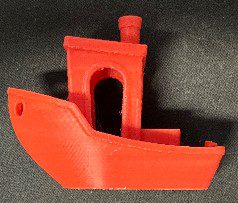Twelve Tips of Christmas: Tip 4: Simple Turning Tool Set Up
See warning and disclaimer at the bottom of the page!!
Correctly positioning the cutting point of your turning tool in relationship to the centreline of your lathe is critical to a number of things, but most notibaly…
- Tool life
- Surface finish (also affected by geometry)
- Cutting efficiency
On many modern CNC machines tool height is not an issue, rather a case of buying the correct sized qualified tooling for the machine. however, manual machines can be a little more tricky to set up. A lot of novice engineers may not consider the criticalities of tool alignment and may try to align the tool tip to a drill or centre mounted in the tail stock, and while this may get you close to centre height, it wont get you as close as you need to be.
When I done my apprenticeship, I was taught to measure from the machine bed to the position of a dead centre (non rotating) and then get the tool at the same height, this is time consuming, and I was happy to learn from a colleague that there is a much easier way of assessing tool height, however you still need a ruler
(I would personally recommend a thin section 150mm (6″) steel rule.)

The process is simple…….
- Mount the tool securely into the tool holder / tool post
- Mount a piece of good quality round bar in your lathes 3 jaw chuck, with minimal overhang (for example your work piece)
- Hold the steel rule against your work piece so that there is approximately the same amount of ruler above and below the centreline. (Somewhere around the 75mm (3″) mark if using the recommended ruler)
- Using the cross slide, gently move the tip of the tool until is is in contact with the rule, so that it lightly pinches it onto the work piece.
- Assess the ruler position…
- If the top to the rule moves away from you the tool is too high.
- If the rule remains vertical the tool is on centre.
- If the top of the rule moves towards you the tool is too low.
Using the above method is is very easy to get your turning tool on centreline with a high degree of accuracy, it is surprising just how far away from vertical the rule will be if the tool is even 0.25mm above or below centre (although this is dependant upon the workpiece diamater, I find the best results are obtained when you use stock between 12mmØ and 25mmØ (½”Ø – 1″Ø)
Other things to consider…
Another consideration is tool stability, and on that issue I have 2 pieces of basic advice, that should be considered when mounting any type of cutting tool….
- Ensure your turning tool is adequately clamped to your tool post so that it will not move during use.
- Ensure the tip of your turning tool is as close to the tool holder as possible, the more it overhangs the tool post, the greater the chance of tool chatter or tool. damage.
Warning – This tip should only be used when the spindle is stationary and there is no risk of accidental starting. failure to heed this warning may lead to entanglement and serious personal injury.
Want more Tips?
If you would like to receive hints and tips directly into your inbox, please sign up here…
Disclaimer – All workshop tips and advice offered on this site is done so in good faith, White Horse CAD can take no responsibility for personal injury arising from anyone using the advice given.
PLEASE FOLLOW NORMAL HEALTH AND SAFETY PRACTICES AND USE PERSONAL PROTECTIVE EQUIPMENT AS REQUIRED, YOUR SAFETY IS YOUR RESPONSIBILITY!!



You must be logged in to post a comment.